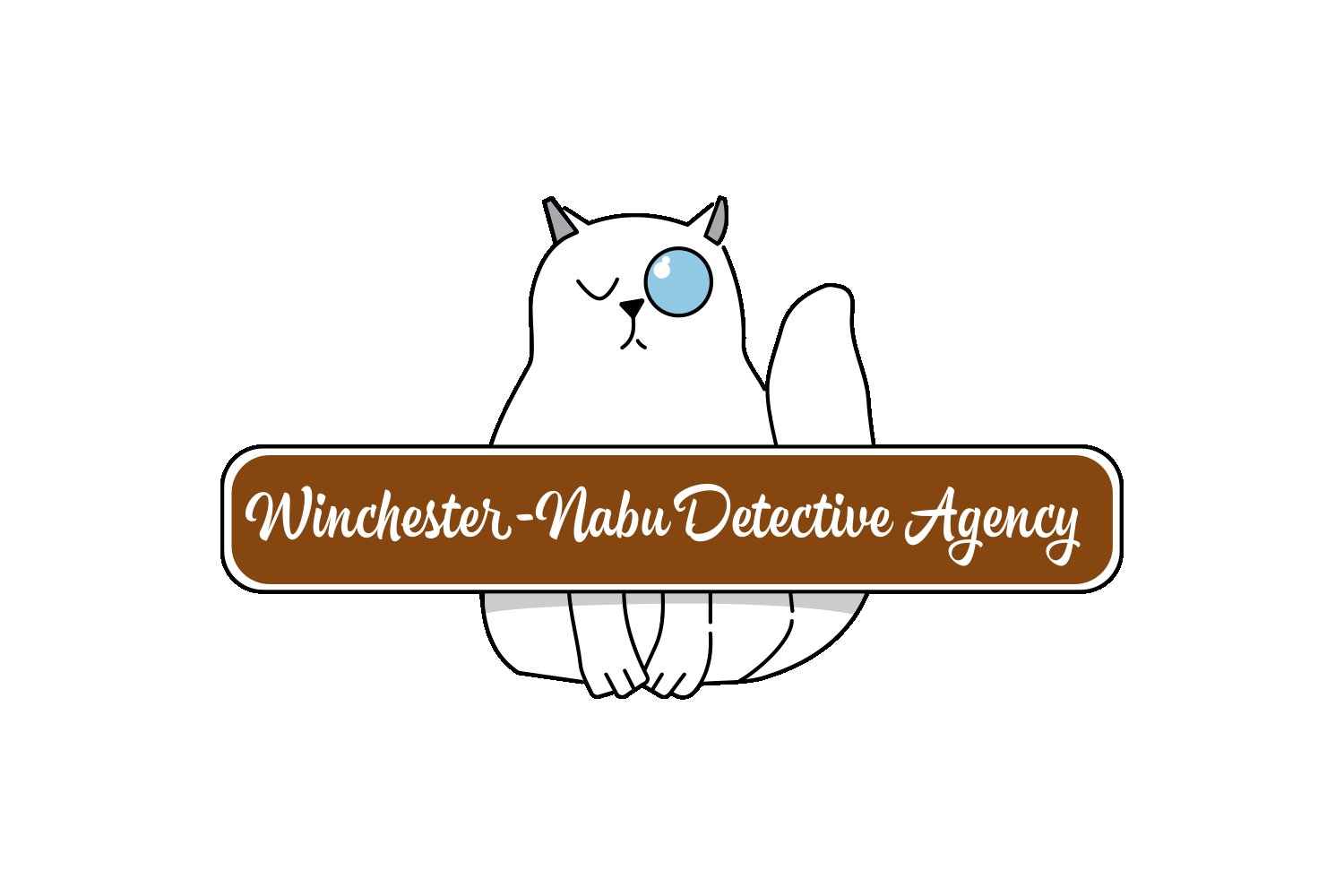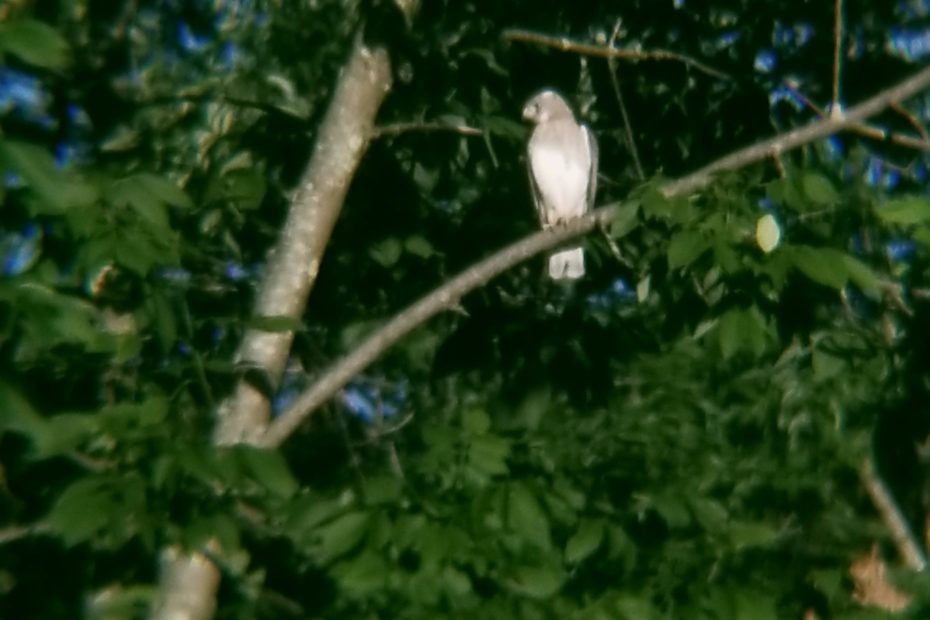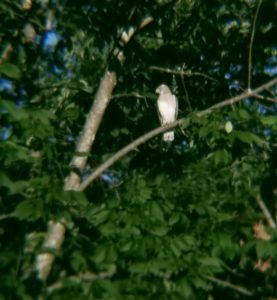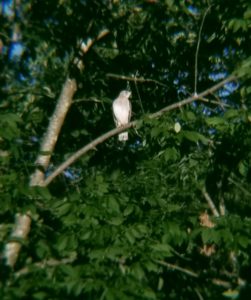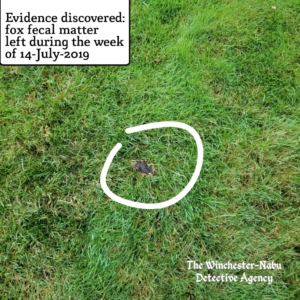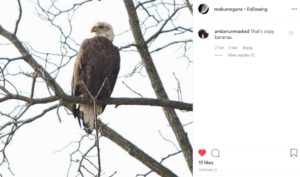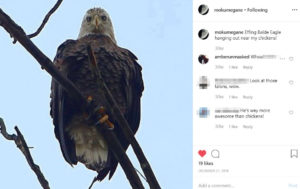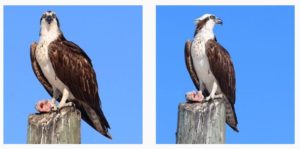This work is supported by the generous backers who adore my cat stories at Patreon.com/amberunmasked and they also get first access to what’s happening with my books and podcast.
Where We Left Off:
The Winchester-Nabu Detective Agency has had interactions with some of history’s most legendary creatures. Gus continues his escapes to try and further the investigations all on his own.
Day of the Falcon:
You may ask yourself, “What does a small town cat detective agency have to do with Russian spies?” Or maybe you don’t, but this is the kind of story that should garner international attention like Maria Butina.
Birdwatching has been an integral part of the cat detectives’ investigations as well as my own personal meditation practice. We’ve had time to observe the behaviors of the starlings, catbirds, blue jays, and others who like to summer here. The starlings, by the way, left once their fledglings departed. It’s been plentiful with catbirds, robins, and blue jays. We get the occasional cardinals, goldfinches, and house finches. We even had some less than typical sightings of towhees and grosbeaks. There was a rather exciting weekend when a raptor circled above the yard and nearby properties.
Hawks are considered common here, particularly the red-tailed hawk species. They have a shrieking cry like a banshee which you’ve probably heard in movies if not in real life. Photographing them seems to be a lot about luck as with any wildlife. One day, a hawk may be circling one area, but by the time you remember your camera and get back there, it’s moved on. The red-tailed hawks are easily spotted on wires and telephone poles along roads that have plenty of fields or large yards in this area; they are also seen in cities which have enough rodents to keep them well-fed.
During that particular July day, the entire detective agency staff was on the balcony having coffee. The Cook did her usual crossword puzzles — sometimes talking to herself, but other times asking if any of us knew the answers. I noticed the raptor above and got the pair of sport binoculars that are kept just inside one of the doors. It was flying too quickly for me to notice any details about it. That’s why I was so surprised that it landed in one of our trees. I was able to get a breathtaking look at the beautiful creature.
I zoomed in with my cell phone’s camera and tried to get some pictures clear enough to look up the species on Merlin ID app or whatbird.com. The software results were inconclusive. They didn’t return the same best guesses about the species. From looking through the binoculars, I tried to mentally note the features. The tail was short and didn’t appear to have any banding coloration. The chest was white and speckled. The head and wings were grey. This didn’t seem like a red-tailed hawk.
I pondered the results from the apps and thought perhaps we had a Cooper’s hawk on the property. It would be unusual, but the description matched the photos of the light amorphous variety. The tricky part is that unless you have time to compare side-by-side, the Cooper’s hawk also looks the same as the sharp-shinned hawk. That’s why I had to attempt the identification with more assistance. Narrowing down possibilities meant what was more likely for western New Jersey and other variables.
I met with Oliver to compare the bird calls on the Merlin ID app with what we could hear when the bird circled overhead. To me, the sounds were either “heck no” or too similar to differentiate. Oliver was more interested in the motivation of the bird. He wanted to know why it was here when it’s so rare for a raptor to land near our property. In fact, this was the only second one as far as we knew. I once spotted another and got even worse quality images, so I couldn’t ID that first bird. We’ve seen them circling more often and I read they are unlikely to go after cats. I agreed with Oliver that this was suspicious behavior for a type of raptor perch here.
Discovering the Evidence:
It wasn’t until a couple days later that this became a case file. The Grumpy Old Man came over to me as I got out of my car and urged me to follow him. That was strange considering how rarely he actually speaks to me.
“There’s a dead hawk or something over there.” He turned off the lawn mower and hopped off to lead me to a small lot of grass between Gnome Grove and the woods.
He and the Cook didn’t go any closer, but I pressed onward. Gus wasn’t with me so I had to do this by myself. I’ve seen corpses, but usually they’re much smaller except for the routine roadkill I would drive past. When I spotted the white mound in the grass, I looked down and thought the shape was odd. It seemed to be only a wing. I wondered if the bird was somehow closed up with its wings tight against its body in rigor mortis.
I crouched down and looked at how gorgeous the feathers were. I didn’t have my adventuring pack with me which would have gloves and instruments to help with a field investigation. It seemed extremely unlikely that a bird would drop dead out of the sky and happen to land right there which meant this was most likely a crime scene.
I can’t recall the exact details, but I lifted the mass by holding a couple of the feathers and turning it over. I was correct in my first assumption: it was only a wing. A wing that big that it looked like a whole body to those of us used to dealing with smaller creatures. This wing had been torn clear off the body like when you buy chicken wings at the supermarket only this still had feathers, smelled a little, and had a few bugs.
I’m honestly not sure how I managed to do this considering my phobias, but I carried the wing inside by the strong feathers and washed it in the sink with Dawn dish soap (my go to soap for bones and such). After giving it a reasonably decent bath and discarding the thin feathers that fell out from handling it, I began plucking the stronger feathers and placing them on a paper towel. Even before being vegetarian, I hated handling raw meat. I would probably not be a successful med student as interesting as the science is.

I emailed the Raptor Society and asked them if the feathers needed to be surrendered to a feather bank or some government agency. They replied an hour later and said it’s federally prohibited to keep the feathers or any part of the bird, but I was supposed to throw it in the garbage. This made me angry, not gonna lie. I didn’t murder the bird. My cat didn’t even kill it. We had a good suspicion it was one of the foxes that live around here. The wing was torn with precision of the raptor’s natural predator.
Sometimes you’re the predator; sometimes you’re the prey.
Why is this illegal when the bird was found dead?
In this instance, the bird of prey was the prey. Before we get into the mystery of who did this, I’ll divert on a tangent to explain that I wrote to my local federal representatives about this old law, the Migratory Bird Treaty Act of 1918. While it’s a great international treaty in concept to prohibit things like shooting down birds to use their feathers as fashion accessories, I’ll point out that poachers are gonna poachers. Villains gonna vill. Some species need opportunities to rebound from over-hunting. The 19th century was particularly brutal and wasteful when it came to wildlife populations much as it was during colonialism and manifest destiny and all that.
If you’re wondering about indigenous people and tribal customs, I researched that too because only indigenous customs are ever discussed when it comes to who gets to file for religious use of feathers or other body parts of protected animals. I’m glad there’s a process, but it’s a limited process. I hated that I had to “Not All” in a debate, but I did [shame emoji here].
The ban of feathers, particularly endangered species, is supposedly under consideration by the Department of the Interior for federally recognized Native American tribes for the purposes of religious freedom. Permits are allowed under the Morton Law.
However, here some issues:
- Not all Native Americans are part of a federally recognized tribe.
- People other than indigenous cultures utilize animal parts ethically sourced as part of their rituals and traditions. Whether following Wicca, Celtic Pagan, Asatru, or Santeria, animal parts for the sake of worship has been part of many non-Native American cultures.
- There are secular people who are not scientists who could easily have an interest in feathers sourced ethically too, such as those found while hiking.
The only way a feather from any of the 800 species on the migratory bird list can be kept is through filing for a permit with Interior. Falconers, museums, scientists, and zoos can get such permits to own feathers; some have to apply to a two-year waiting list for frozen eagle parts from the National Eagle Repository. Yet power companies are allowed permits to actually kill eagles. This seems absurd.
That’s a large part of the letter I sent only it also had footnote citations for the sources instead of links. I not only had to “Not All” and cringe while doing so, I had to listen to the Federalist podcast about the Religious Freedom Whatever-Whatever Act which is where conservatives and right-wingers use the Native American traditions as a bargaining tool about the First Amendment; when anyone with a clue knows that legislature is all about allowing bigotry and legalizing hate with a court-backed defense of “religious rights” to do so.

Native Americans who are not part of a tribe should be allowed to file for a permit. Pagans, Wiccans, and anyone else with justified desire for birds of prey parts should be allowed to file for a permit. Basically, if you find it and there’s no shortage in the scientific research community nor the educational community and the artifact is disease-free — I think you should be allowed to keep it.
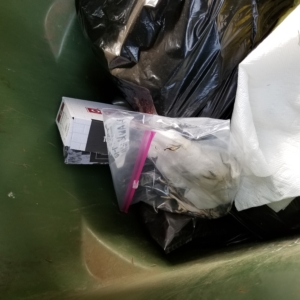
In my ire about being told to throw these feathers in the garbage, I emailed my friend Bruce—a good guy to know for wild creature and weaponry questions. Follow his Instagram @mokumegane. I asked if there’s an exemption about finding the feathers in nature and he gave me the same warning as the Raptor Society. The good news is that Hagrid identified the bird and the wing from my crappy photos. He said it was a Peregrine Falcon and the wing was most likely from the one we saw perched in the tree.
Well, that sucks.
Who Murdered the Falcon and Who Was He?
Now we need to get into the mystery of the murder itself. As I said, Gus and I suspect a fox did it. They prey on chickens and other birds; we’ve seen them in the exact spot where the wing was found; there are at least three different foxes around the Winchester-Nabu estate.
Once we identified the species of the bird, Oliver went to work researching and doing his detective magic to find out the bird’s true identity and reason for being here. Was it simply a passerby looking for a meal? Not according to Oliver.
Dossier: Aldrich Aves
Aldrich Aves came from an uneventful upbringing. He began working for the CIA as a blue collar laborer but was recruited into the training program after several years of clerical jobs. Aldrich Aves moved around on assignments but eventually landed in New York City not that far from here (if you can fly, that is — commuting as a human sucks). According to the employee records Oliver hacked, Aldrich Aves had relatively fine performance reviews, but was reprimanded for sloppy work which caused security violations of classified data. He seems to have fancied himself the James Bond of the CIA cheating on his wife with foreign nationals. His drinking problem grew worse as time went on.

Aves worked for the Soviet-Eastern European (SE) division monitoring Soviet Russian activity and eventually ran the counterintelligence. He had the highest possible security clearance for the SE division with access to all the operations involving the KGB and other foreign enemy agencies.
All the philandering and the stress of the job broke up Aves’ marriage. The settlement nearly bankrupted him. Oliver believes this is why Aves began spying for the Russians. If you pay any attention to the news, you have seen what the Russian interference with our elections has done. It’s not only the 2016 Presidential Election either. They have their mitts in a lot. They’re even messing things up in Canada, the land considered safe from Gilead!
The Suspects:
Based on other evidence collected around the estate including stool samples of Vulpes vulpes individuals, Oliver is one hundred percent certain that a fox murdered Aldrich Aves. Which one though?
Vivica B. Fox and Foxy Brown are often seen in the area, but not together. Vivica is currently sporting a bright red-orange coat and has a partner. Foxy is more stealth in an earthy blend of greys and browns. More on them in another case file.
While both of those vixens are capable to kicking ass and devouring their enemies at a moment’s notice, we are not aware of any social activism or vengeance they would have against a Russian spy like Aves. That leaves one other suspect, Kirsten Killabrand. Oliver Winchester presented his findings.
Case Findings:
Kirsten Killabrand is staunchly anti-fascist and a proud “SJW” (that’s social justice warrior/witch for those out of the Twitter loop). Killabrand is vocal and has been involved in politics her entire life. She is running for Mayor of the 40 Acres. When she heard about a Russian spy creeping through her home town, she wanted to put a stop to it before Aves had a chance to meddle in the 40 Acres election or do anything else that may harm the peace treaties in place. Killabrand is not fond of the influence of the chipmunk mafia, but they have not yet crossed paths with her or interfered with her plans. Despite making multiple trips through our neighborhood every week, we have failed to get decent photos.
More on the foxes in another case file. For now, Oliver thinks Kirsten Killabrand was justified in her attack on Aldrich Aves. Other than the wing we briefly took into evidence, the rest of the carcass was used for food.
Case Status: Closed
Gallery of Bruce’s work:
